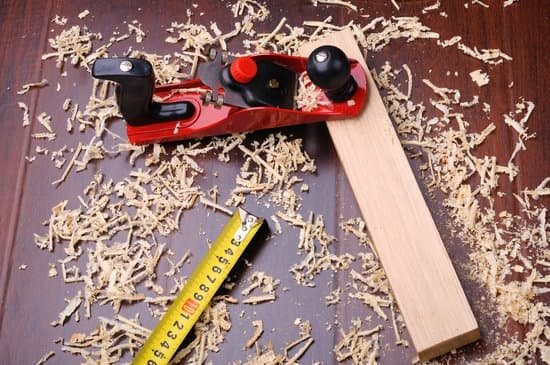Are you a woodworking enthusiast looking to enhance your projects with the right tools and equipment? Look no further than the versatile and essential woodworking clamp stand.
In this article, we will explore the world of woodworking clamp stands, their importance in woodworking projects, different types available, how to choose the right one for your needs, building your own DIY stand, tips for effective use, and maintenance and care. Whether you are a beginner or a seasoned woodworker, having the right woodworking clamp stand can make all the difference in the quality and efficiency of your projects.
Woodworking clamp stands are an indispensable tool in any woodworker’s arsenal. They provide stability, support, and precision when working on various woodworking projects. By securely holding pieces of wood together while glue dries or providing extra support during cutting or sanding, woodworking clamp stands are a must-have for any workshop.
In this comprehensive guide, we will delve into the details of woodworking clamp stands – from understanding their importance to selecting the right type for your specific projects. Additionally, we will provide valuable insights into DIY options for those who prefer to customize their own stand according to their unique requirements. Join us as we explore everything you need to know about woodworking clamp stands and how they can elevate your woodworking endeavors.
The Importance of Using a Woodworking Clamp Stand
Woodworking clamp stands are an essential tool for any woodworker, whether you are a beginner or a seasoned professional. They play a crucial role in holding pieces of wood together securely during various woodworking tasks, such as gluing, sanding, routing, and assembly. Here are some key reasons for the importance of using a woodworking clamp stand:
1. Precision and Accuracy: When working on intricate woodworking projects, precision and accuracy are paramount. A woodworking clamp stand ensures that each piece of wood is held firmly and in the exact position required for the task at hand. This prevents any movement or slippage that could result in inaccuracies and imperfections in the final product.
2. Safety: Working with power tools such as routers and saws can be dangerous if the workpiece is not secured properly. A woodworking clamp stand provides the stability needed to keep your hands at a safe distance from cutting edges, reducing the risk of accidents and injuries.
3. Efficiency: Using a woodworking clamp stand allows you to work more efficiently by freeing up your hands to focus on other aspects of the project. Whether you are applying glue, making adjustments, or finishing surfaces, having a secure hold on the wood piece enables smoother workflow and faster completion of tasks.
In summary, a woodworking clamp stand is an indispensable tool that ensures precision, safety, and efficiency in woodworking projects. With the right type of clamp stand for your specific needs and projects, you can elevate the quality of your work while maintaining a safe workspace. Whether you are working on small DIY projects or large-scale carpentry jobs, having a reliable woodworking clamp stand is essential for achieving professional results.
Types of Woodworking Clamp Stands
Woodworking clamp stands come in various types, each designed for specific woodworking tasks. Understanding the different types of woodworking clamp stands will help you choose the right one for your projects, ultimately leading to a more efficient and successful woodworking experience.
Here is a comprehensive overview of the types of woodworking clamp stands:
- F-Bar Clamp Stands: These are versatile and commonly used for securing large pieces of wood or metal. The F-bar design allows for easy adjustment and a secure grip on materials.
- Parallel Jaw Clamp Stands: Known for their precision and strength, parallel jaw clamp stands are ideal for projects that require consistent pressure across the entire length of the material. These clamps are often used in cabinet making and other fine woodworking tasks.
- Pipe Clamp Stands: Featuring a simple design with a pipe that serves as the clamping element, pipe clamp stands are highly affordable and provide ample pressure for most woodworking projects. They are popular among DIY enthusiasts and hobbyists.
- C-Clamp Stands: Named after their shape, C-clamp stands are suitable for light to medium-duty applications. They are easy to use and can be positioned in various angles, making them a versatile choice for many woodworking tasks.
Understanding these different types of woodworking clamp stands will give you insight into their specific uses and advantages, allowing you to select the best option based on your project requirements. Whether you’re working on cabinetry, furniture making, or general carpentry, having the right type of clamp stand can make all the difference in achieving professional results.
Additionally, when considering which type of woodworking clamp stand to invest in, it is important to take into account factors such as durability, ease of use, maximum clamping capacity, and overall construction quality. By carefully evaluating these factors in relation to your individual needs and preferences as a woodworker, you can ensure that you choose the perfect woodworking clamp stand that will enhance your craftsmanship.
How to Choose the Right Woodworking Clamp Stand for Your Projects
When it comes to choosing the right woodworking clamp stand for your projects, there are several factors to consider. The type of projects you typically work on, the size of your workspace, and your budget are all important considerations when selecting a woodworking clamp stand.
Consider the Type of Projects You Work On
One of the first things to consider when choosing a woodworking clamp stand is the type of projects you typically work on. If you frequently work on large woodworking projects such as furniture or cabinetry, you will likely need a clamp stand that can accommodate larger pieces of wood. On the other hand, if you primarily work on smaller projects such as picture frames or smaller decorative items, a smaller clamp stand may suffice.
Evaluate Your Workspace
The size of your workspace is another important factor to consider when choosing a woodworking clamp stand. If you have a small workshop or limited space for woodworking projects, you may need to choose a clamp stand that is compact and can be easily stored when not in use. Conversely, if you have ample space in your workshop, you may have more flexibility in choosing a larger and more robust woodworking clamp stand.
Set Your Budget
Finally, it’s important to set a budget for your woodworking clamp stand. These stands can vary widely in price depending on their size, features, and quality. Consider how much you are willing to invest in this essential tool for your woodworking projects. Keep in mind that while there are budget-friendly options available, investing in a higher-quality woodworking clamp stand may provide greater durability and functionality in the long run.
By carefully considering the type of projects you work on, evaluating your workspace, and setting a budget for your purchase, you can choose the right woodworking clamp stand that will best suit your needs and enhance your woodworking projects.
Step-by-Step Guide to Building Your Own DIY Woodworking Clamp Stand
Building your own DIY woodworking clamp stand can be a fun and rewarding project for any woodworking enthusiast. Not only will it save you money, but it will also give you the satisfaction of using a tool that you built with your own hands. In this section, we will provide you with a step-by-step guide to help you construct your very own woodworking clamp stand.
First, gather all the necessary materials and tools for the project. You will need plywood or solid wood for the base and uprights, as well as screws, wood glue, a saw, drill, and measuring tape. Once you have all these items ready, you can begin building your woodworking clamp stand.
Next, cut the plywood or solid wood to the desired dimensions for the base and uprights of the clamp stand. The size of your woodworking projects will determine how many clamps you plan to store on the stand, so make sure to measure and cut accordingly. Assemble the base and uprights using wood glue and screws to ensure stability and durability.
Finally, add any additional features or accessories to your woodworking clamp stand that may enhance its functionality, such as shelves for storing other tools or hooks for hanging smaller clamps. Once everything is securely in place, test your new woodworking clamp stand by organizing your clamps on it to make sure it can hold them securely.
By following these steps, you can create a custom woodworking clamp stand that meets your specific needs and preferences.
| Materials Needed | Tools Needed |
|---|---|
| Plywood or solid wood | Saw |
| Screws | Drill |
| Wood glue | Measuring tape |
Tips and Tricks for Using a Woodworking Clamp Stand Effectively
Woodworking clamp stands are essential tools for any woodworking project, as they provide stability and support when securing materials together. However, it’s important to use them effectively to ensure the best results. Here are some tips and tricks for getting the most out of your woodworking clamp stand.
Firstly, it’s crucial to select the right type of woodworking clamp stand for your specific project. Whether you’re working with large or small pieces of wood, different clamp stands are designed to accommodate various sizes and shapes. For larger projects, consider using a heavy-duty bar clamp stand that can exert significant pressure and provide a strong grip. Similarly, for smaller, delicate tasks, a light-duty hand screw clamp stand may be more suitable.
Additionally, positioning is key when using a woodworking clamp stand effectively. It’s crucial to place the clamps strategically in order to distribute pressure evenly across the workpiece. This not only prevents damage to the material but also ensures a secure bond. Take into consideration the grain direction of the wood and adjust the placement of the clamps accordingly.
Furthermore, regular maintenance is essential for keeping your woodworking clamp stand in top condition. Ensure that all moving parts are well lubricated and free from debris that could affect their performance. Periodically check for any signs of wear or damage and replace any worn-out components promptly to avoid compromising the functionality of the clamp stand.
By following these tips and tricks, you can harness the full potential of your woodworking clamp stand and achieve professional-quality results in your woodworking projects. Whether you’re a beginner or an experienced woodworker, using these tools effectively will enhance the precision and efficiency of your work.
Maintenance and Care for Your Woodworking Clamp Stand
Woodworking clamp stands are an essential tool for any woodworker, and it is important to properly maintain and care for them to ensure their longevity and effectiveness. Proper maintenance not only extends the life of the woodworking clamp stand but also ensures that it continues to perform at its best. In this section, we will discuss the importance of maintenance and provide some tips on how to care for your woodworking clamp stand.
Importance of Maintenance
Regular maintenance is crucial for woodworking clamp stands to function optimally. Over time, dust, debris, and sawdust can accumulate on the stand, affecting its grip and stability. Proper maintenance also helps prevent rust and corrosion on metal parts, which can compromise the strength of the clamp stand. By regularly cleaning and inspecting your woodworking clamp stand, you can identify any issues early on and address them before they become larger problems.
Caring for Your Woodworking Clamp Stand
To keep your woodworking clamp stand in top condition, it is essential to clean it after every use. Use a brush or compressed air to remove dust and debris from the moving parts and threads. Wipe down metal surfaces with a cloth lightly dampened with a rust-preventative oil to prevent corrosion.
Inspect the pads and grips regularly, replacing them if they show signs of wear or damage. It is also important to store your woodworking clamp stand in a dry environment to prevent rust or mold from developing.
By following these simple guidelines for maintenance and care, you can ensure that your woodworking clamp stand remains in excellent condition for years to come, allowing you to continue working safely and efficiently on your woodworking projects.
Top 10 Woodworking Clamp Stands on the Market
Woodworking Clamp Stands are essential tools for any woodworking enthusiast. They provide stability and support for your projects, ensuring that your materials are held securely in place while you work. There are a wide variety of woodworking clamp stands available on the market, each with its own unique features and benefits. In this section, we will review and compare the top 10 woodworking clamp stands to help you make an informed decision about which one is right for you.
When looking for a woodworking clamp stand, it’s important to consider factors such as the size and weight capacity of the stand, as well as its durability and stability. Additionally, you’ll want to look for features such as adjustable height and angle capabilities, as well as easy-to-use clamping mechanisms.
The top 10 woodworking clamp stands on the market have been carefully selected based on these criteria, and each one offers something unique to meet the needs of woodworkers at all skill levels.
One of the standout options in the market is the Bessey BPC-H34 Woodworking Clamp Stand. This heavy-duty stand has a load capacity of up to 350 pounds and features a durable steel construction. It also boasts a quick-release lever for easy adjustments, making it a popular choice among woodworkers.
Another top contender is the Rockler Sure-Foot Plus Woodworking Clamp Stand, known for its large clamping surface area and stable base design. With its quick-grip handle and heavy-duty construction, it’s a reliable option for holding your workpieces securely in place.
| Woodworking Clamp Stand | Key Features |
|---|---|
| Bessey BPC-H34 | Load capacity: 350 pounds; Durable steel construction; Quick-release lever |
| Rockler Sure-Foot Plus | Large clamping surface area; Stable base design; Quick-grip handle; Heavy-duty construction |
By comparing these top woodworking clamp stands, you can make an informed decision about which one best suits your specific woodworking needs. Whether you’re working on small projects or large-scale creations, having a reliable and sturdy clamp stand is crucial to achieving professional results in your woodworking endeavors.
Conclusion
In conclusion, a woodworking clamp stand is an essential tool for any woodworker, whether you are a novice or an experienced professional. The importance of using a woodworking clamp stand cannot be overstated, as it provides stability and support for your projects, ensuring precision and accuracy in your work. With the wide range of options available on the market, it is crucial to choose the right woodworking clamp stand that suits your specific needs and projects.
Furthermore, building your own DIY woodworking clamp stand can be a rewarding and cost-effective option, allowing you to customize the stand to fit your workspace and requirements. By following a step-by-step guide and incorporating tips and tricks for effective use, you can maximize the benefits of your woodworking clamp stand and elevate the quality of your projects.
Finally, proper maintenance and care for your woodworking clamp stand will ensure its longevity and efficiency. Regular inspection and cleaning will help prevent wear and tear, ultimately saving you time and money in the long run.
With the right woodworking clamp stand, you can enhance the quality of your woodworking projects and achieve professional results with ease. Whether you choose to invest in a top-quality product or build your own DIY stand, the benefits of having a reliable woodworking clamp stand are undeniable.
Frequently Asked Questions
What Is a Workbench Clamp Called?
A workbench clamp is commonly referred to as a “bench vise.” This tool is used to secure materials to a work surface, allowing for stability and precision during various woodworking tasks.
What Is a Woodworking Clamp Called?
In woodworking, the term “woodworking clamp” typically refers to a variety of clamps used to hold wood in place during cutting, shaping, or gluing. These can include bar clamps, pipe clamps, C-clamps, and more.
What Clamps Should a Woodworker Have?
For woodworking, it is essential for a woodworker to have a selection of clamps that includes bar clamps for larger projects, spring clamps for temporary fastening, C-clamps for versatile use, pipe clamps for longer pieces of wood, and hand screw clamps for delicate work like gluing.
Each type of clamp serves a specific purpose and having a variety ensures versatility in woodworking projects.

Hi everyone! I’m a woodworker and blogger, and this is my woodworking blog. In my blog, I share tips and tricks for woodworkers of all skill levels, as well as project ideas that you can try yourself.





